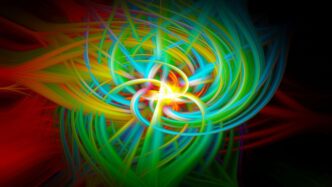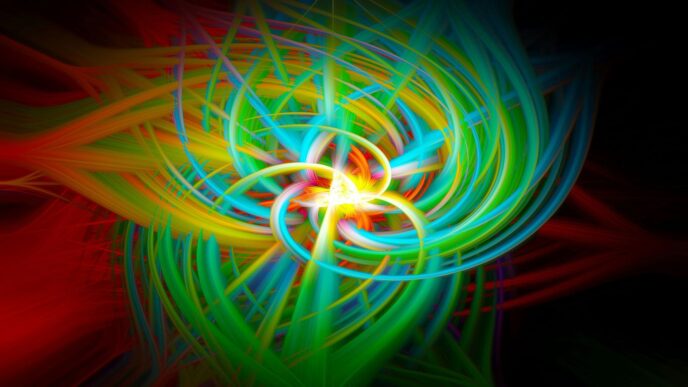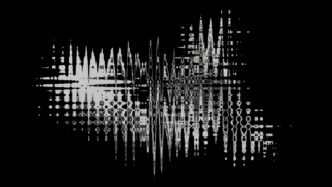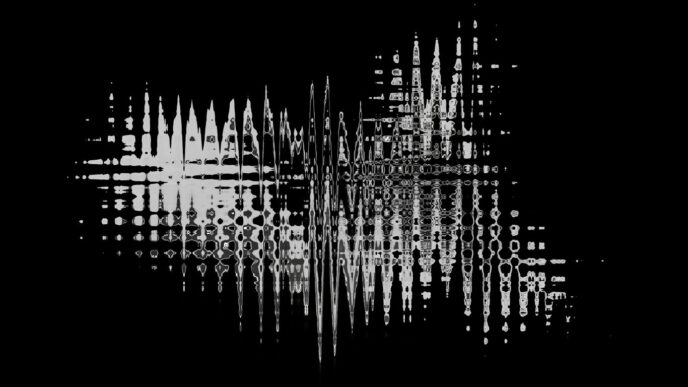Quantum mechanics is one of the most intriguing and complex fields in physics. It explores the behavior of matter and energy at the smallest scales, often defying our everyday understanding of reality. This guide aims to break down the essential concepts of quantum mechanics, its historical development, and the philosophical questions it raises. Whether you’re a student, a curious reader, or someone looking to deepen your understanding, this quantum mechanics PDF guide will provide a solid foundation.
Key Takeaways
- Quantum mechanics fundamentally changes our understanding of particles and waves.
- Historical developments in quantum theory shaped modern physics, influenced by figures like Planck and Einstein.
- Non-locality challenges classical ideas of separation in space and time, raising questions about the nature of reality.
- The measurement problem highlights the complexities of observation in quantum systems, leading to various interpretations.
- Philosophical implications of quantum mechanics provoke debates about existence, reality, and the observer’s role.
Understanding Quantum Mechanics Fundamentals
Defining Quantum Mechanics
Okay, so what is quantum mechanics? It’s not just some fancy physics term scientists throw around. Quantum mechanics is basically the rulebook for how the really, really small stuff in the universe behaves. We’re talking atoms, electrons, photons – the building blocks of everything. It’s weird, because these tiny particles don’t follow the same rules as, say, a baseball. It’s more like they exist in a blurry state of possibilities until we try to measure them. It’s a bit like saying a coin is both heads and tails at the same time until you look at it. This quantum mechanics definition is important to understand.
Historical Context of Quantum Theory
Quantum theory didn’t just pop up overnight. It was a slow burn, starting with a few nagging problems that classical physics couldn’t explain. Think of it like this:
- The Blackbody Problem: Classical physics predicted that hot objects should emit infinite energy, which is obviously not what happens. Max Planck came along and said energy is emitted in discrete packets, or "quanta." This was the first crack in the classical world.
- The Photoelectric Effect: Einstein explained how light can knock electrons off a metal surface, but only if light comes in packets (photons). This solidified the idea that energy is quantized.
- Atomic Structure: Bohr used quantum ideas to explain why electrons orbit the nucleus at specific energy levels. This was a huge step in understanding atoms.
These discoveries, among others, paved the way for the development of quantum mechanics as we know it. It was a wild time for physics, with lots of smart people arguing and figuring things out. It’s a good reminder that even the most solid-seeming theories can be overturned by new evidence. It’s interesting how theoretical scientists are still working on this.
Key Principles of Quantum Mechanics
Quantum mechanics is built on some pretty strange ideas. Here are a few of the big ones:
- Quantization: Energy, momentum, and other properties can only take on specific, discrete values. It’s like climbing a staircase instead of a ramp – you can only stand on certain steps.
- Superposition: A quantum system can exist in multiple states at the same time. That coin is both heads and tails until you look. This is probably the weirdest part for most people.
- Uncertainty: There’s a fundamental limit to how accurately we can know certain pairs of properties, like position and momentum. The more you know about one, the less you know about the other. It’s not just a matter of measurement error; it’s built into the fabric of reality. This quantum theory is still being explored.
- Wave-Particle Duality: Particles can act like waves, and waves can act like particles. Light, for example, can behave as both a wave and a stream of photons. It’s mind-bending, but that’s quantum mechanics for you.
Exploring Quantum Non-locality
Quantum non-locality is one of those concepts that really messes with your head. It challenges our everyday understanding of how the world works. In classical physics, stuff can only affect other stuff it’s directly touching, or at least connected to by some kind of physical process. But quantum mechanics? It suggests things can be linked in a way that distance just doesn’t matter.
Bell’s Theorem Explained
Bell’s Theorem is the biggie here. It’s not exactly a theorem you can just understand in five minutes, but the gist is this: it shows that if the world behaves in a ‘realistic’ and ‘local’ way, then certain inequalities must hold true. Experiments have shown these inequalities are violated, meaning at least one of those assumptions—realism or locality—must be wrong. Most physicists take this to mean that quantum mechanics is non-local. It’s like, imagine flipping two coins that are miles apart, and somehow, they always land on opposite sides. Spooky, right?
Implications of Non-locality
So, what does this non-locality business actually mean? Well, it’s not like you can use it to send messages faster than light. Nature seems to have conspired to prevent that. If you could, it would open up all sorts of paradoxes, like closed causal loops where effects precede their causes. One interesting idea is quantum entanglement. It suggests that the universe might have some hidden constraints that limit how non-local things can be. For example, the idea of ‘information causality’ suggests there’s a limit to how much information can be transferred non-locally. It’s a bit like saying, "Okay, things can be weird, but not too weird."
Experimental Evidence of Non-locality
Experiments keep confirming that quantum mechanics is non-local. These experiments usually involve measuring the properties of entangled particles. The results consistently violate Bell’s inequalities, backing up the idea that there’s some kind of instantaneous connection between these particles, no matter how far apart they are. It’s not just a theoretical thing; it’s something we can see happening in the lab. It’s still a puzzle how to reconcile this with our understanding of space and time, but the evidence is pretty solid. It’s like the universe is telling us, "Yeah, I know it doesn’t make sense, but deal with it."
The Measurement Problem in Quantum Mechanics
Overview of the Measurement Problem
Okay, so quantum mechanics is super weird, right? One of the things that makes it so mind-bending is something called the measurement problem. Basically, it boils down to this: quantum systems can exist in a superposition of states, meaning they’re kind of in multiple states at once. But when we measure something, it suddenly "collapses" into one definite state. The big question is: why and how does this collapse happen?
Think of it like this: before you look at a quantum particle, it’s like a blurry mix of possibilities. But the moment you try to observe it, it’s like it suddenly makes up its mind and picks one. What’s so special about measurement? Does it require a conscious observer? These are the questions that keep physicists and philosophers up at night. The measurement results are our evidence for the theory.
Interpretations of Quantum Measurement
Because the measurement problem is so tricky, there are a bunch of different ideas about what’s really going on. These are called interpretations of quantum mechanics, and they all try to explain the collapse of the wavefunction in their own way. Here are a few:
- Copenhagen Interpretation: This is the classic view, which says that measurement forces the system to choose a state, but it doesn’t really explain how or why. It’s kind of like saying, "That’s just how it is!"
- Many-Worlds Interpretation: This one’s wild. It suggests that every measurement causes the universe to split into multiple universes, one for each possible outcome. So, instead of collapsing, all possibilities happen, just in different realities.
- Pilot-Wave Theory (Bohmian Mechanics): This interpretation says that particles have definite positions all the time, and they’re guided by a "pilot wave." Measurement just reveals the particle’s pre-existing position.
It’s important to note that all these interpretations make the same predictions, so it’s hard to tell which one (if any) is correct. It’s more about how you think about what’s happening at the quantum level. The Born rule is sometimes known as the ‘Born rule’.
The Role of the Observer
One of the most unsettling aspects of the measurement problem is the potential role of the observer. Does it take a conscious being to cause the collapse of the wavefunction? Some interpretations seem to suggest this, which leads to all sorts of philosophical headaches. Does that mean the universe didn’t "solidify" until consciousness evolved? It’s a pretty crazy thought.
Some people argue that it’s not about consciousness, but about any interaction with a macroscopic system. The problem is, it’s hard to define exactly what constitutes a "measurement" or a "macroscopic system." It’s a fuzzy boundary, and that’s part of what makes the measurement problem so persistent. We still have no coherent story about how we actually come to obtain the measurement results which are our evidence for the theory, and in the absence of such a story we can hardly claim to have a complete theory. The collapse of the wavefunction is a common term.
Contextuality and Quantum Foundations
The Kochen-Specker Theorem
Okay, so the Kochen-Specker Theorem is a big deal when we’re talking about quantum mechanics. Basically, it throws a wrench into the idea that quantum properties have pre-determined values before you measure them. It demonstrates that the value you get from measuring a quantum property depends on what other measurements you’re doing at the same time. It’s like the quantum world is super sensitive to context. The Kochen-Specker theorem shows that certain sets of measurements on a quantum system can’t be explained by assuming that the properties being measured had definite values beforehand, regardless of the measurement context. This is a key concept when discussing PT-symmetric theories.
Deterministic Contextuality
Deterministic contextuality takes the idea of contextuality and cranks it up a notch. It suggests that the outcomes of quantum measurements aren’t just influenced by the measurement context, but are completely determined by it. This means that if you set up the exact same measurement context, you’ll always get the same result. It’s a pretty wild idea, because it implies that the randomness we see in quantum mechanics might not be so random after all. It’s more like a hidden sensitivity to the surrounding conditions. It challenges our basic assumptions about how the world works at the smallest scales. It’s not just about influence; it’s about complete determination. This is a tough pill to swallow for many physicists, but it’s an idea that keeps popping up in discussions about the foundations of quantum mechanics.
Contextuality in Quantum Computation
So, here’s where things get really interesting. Some researchers think that contextuality might be the secret sauce behind the power of quantum computers. Quantum computers can do some calculations way faster than regular computers, and no one is quite sure why. The idea is that quantum computers can exploit contextuality to perform computations in a way that’s impossible for classical computers. It’s like they’re using the quantum world’s weirdness to their advantage.
Here’s a simplified view of how contextuality might play a role:
- Quantum systems can exist in multiple states at once (superposition).
- The way these states interact depends on the context of the computation.
- This context-dependent interaction allows quantum computers to explore many possibilities simultaneously.
It’s still early days, but the connection between contextuality and quantum computation is a hot topic in the field. If it turns out to be true, it could revolutionize the way we think about computation and the nature of reality itself.
Mathematical Framework of Quantum Mechanics
Postulates of Quantum Mechanics
Okay, so quantum mechanics can seem pretty weird, right? But at its core, it’s built on a few key ideas, or postulates. These postulates are like the foundation upon which everything else is built. Think of them as the rules of the game. One of the big ones is that every physical system has a Hilbert space associated with it. This space describes all the possible states the system can be in. Then there’s the idea that closed quantum systems change over time according to something called unitary transformations. It’s all a bit abstract, but these postulates give us a way to actually do quantum mechanics.
Mathematical Tools in Quantum Theory
To actually do quantum mechanics, you need some serious math skills. We’re talking linear algebra, calculus, differential equations – the whole shebang. One of the most important tools is the density matrix. It’s used to describe the state of a quantum system, especially when you don’t know everything about it. Another big one is operators. Operators act on quantum states to change them, like measuring a property of the system. And of course, you can’t forget about probability theory. Quantum mechanics is all about probabilities, so you need to know how to work with them. Here’s a quick rundown:
- Linear Algebra: Vector spaces, inner products, operators, eigenvalues, eigenvectors.
- Calculus: Differential equations (like the Schrödinger equation), integration.
- Probability Theory: Probability amplitudes, probability distributions.
Applications of Quantum Mathematics
So, what can you do with all this fancy math? Well, quantum mathematics is used in a ton of different areas. It’s essential for understanding atomic structure, like how electrons are arranged around an atom. It’s also used in quantum computing, where qubits are manipulated using quantum gates. And it’s crucial for particle physics, where scientists study the fundamental building blocks of the universe. Quantum field theory is a big one here. It’s a framework that combines quantum mechanics with relativity to describe particles and their interactions. It’s pretty wild stuff. The Kochen-Specker Theorem is also a key application, showing how quantum mechanics defies classical intuition.
Future Directions in Quantum Foundations
Quantum foundations is a field that’s constantly evolving. It’s not just about looking back at the established theories, but also pushing forward to explore new ideas and address lingering questions. It’s a really exciting time to be involved, because there’s so much potential for breakthroughs that could change how we understand the universe.
Emerging Theories and Concepts
There are a bunch of new ideas popping up all the time. One area that’s getting a lot of attention is how quantum mechanics fits with general relativity. People are also looking into things like:
- Quantum Biology: Exploring quantum effects in biological systems.
- Quantum Cosmology: Applying quantum mechanics to the early universe.
- Quantum Information Theory: Using quantum mechanics for information processing.
These emerging fields could give us a more complete picture of how quantum mechanics works in the real world. Some researchers are exploring operational theories to better understand the underlying principles.
Challenges in Quantum Interpretation
Even after all this time, we still don’t have a single, agreed-upon interpretation of quantum mechanics. There are a few big challenges that keep coming up:
- The Measurement Problem: What exactly happens when we measure a quantum system?
- The Role of the Observer: Does the act of observation change the system?
- Reconciling Interpretations: Can we find a way to make different interpretations consistent with each other?
Different interpretations, like the Everett (many-worlds) interpretation or Bohmian mechanics, offer different answers to these questions. Some even suggest that quantum probabilities arise dynamically, similar to thermal probabilities in statistical mechanics. It’s a debate that’s far from settled, and new ideas are always being proposed.
Potential Breakthroughs in Quantum Research
There’s a lot of hope that future research will lead to some major breakthroughs. Here are a few areas where we might see some progress:
- Experimental Tests of Quantum Interpretations: Developing experiments that can distinguish between different interpretations.
- Quantum Gravity: Finding a theory that combines quantum mechanics and general relativity.
- New Quantum Technologies: Using quantum mechanics to create new technologies, like quantum computers and sensors.
One exciting possibility is that cosmologists might find signs that quantum processes in the early universe didn’t quite conform to the same laws we observe today. Putting quantum mechanics back in its real-world relativistic context might shed new light on some of the conceptual problems studied in quantum foundations. It’s a long shot, but if it happens, it would completely change our understanding of the universe. Quantum foundations is important for both intellectual and practical reasons, and that many exciting directions within the field are yet to be fully explored.
Philosophical Implications of Quantum Mechanics
Quantum mechanics isn’t just about tiny particles doing weird things; it messes with our whole understanding of reality. It challenges some of our most basic assumptions about how the world works, leading to some pretty wild philosophical debates. It’s not just physics anymore; it’s philosophy with equations.
Ontology and Quantum Theory
What is real, anyway? That’s the big question when you start mixing quantum mechanics and ontology. Does the quantum state represent something that actually exists, or is it just a way of describing our knowledge of the system? Some interpretations, like those that are -ontic, say the quantum state is real. Others, called -epistemic views, treat it as just a probability distribution over some hidden variables. It’s a fundamental disagreement about the nature of existence at the smallest scales.
Quantum Mechanics and Reality
Quantum mechanics throws a wrench into our classical ideas about reality. Things can be in multiple states at once (superposition), and measuring something instantly affects its state, even across vast distances (entanglement). Does this mean reality isn’t fixed until we observe it? Does the universe split into multiple realities every time a quantum measurement is made? These are the kinds of questions that keep philosophers (and physicists) up at night. It really makes you think about what we mean by "real" in the first place. For example, consider the measurement problem in quantum mechanics.
Philosophical Debates in Quantum Foundations
The foundations of quantum mechanics are a hotbed of philosophical debate. Here are some of the big arguments:
- The Measurement Problem: How does the definite state we observe arise from the superposition of states described by quantum mechanics?
- The Interpretation of the Wave Function: Is the wave function a real, physical thing, or just a mathematical tool?
- The Role of the Observer: Does consciousness play a fundamental role in collapsing the wave function, or is that just nonsense?
These debates aren’t just academic; they affect how we understand the universe and our place in it. It’s a reminder that even our most successful scientific theories can raise profound philosophical questions. The historical context of quantum theory is important to consider when looking at these debates.
Wrapping Up Our Journey Through Quantum Foundations
In closing, we’ve taken a good look at the basics of quantum mechanics and its foundations. It’s clear that this field isn’t just about fancy math or abstract theories; it’s about understanding the very nature of reality. Even after a century, many questions remain unanswered, and that’s what makes quantum mechanics so intriguing. We’ve seen how early ideas sparked major breakthroughs and how ongoing debates keep the conversation alive. As we move forward, it’s essential to keep questioning and exploring these concepts. Who knows what new insights might emerge? The journey into quantum foundations is far from over, and there’s still plenty to discover.
Frequently Asked Questions
What is quantum mechanics?
Quantum mechanics is a branch of physics that studies very small particles, like atoms and photons. It helps us understand how these tiny particles behave and interact.
Why is the history of quantum mechanics important?
The history of quantum mechanics shows how scientists solved tricky problems in physics during the late 1800s and early 1900s. Understanding this history helps us see how modern physics developed.
What is non-locality in quantum mechanics?
Non-locality means that particles can be connected in ways that seem to allow them to affect each other instantly, even if they are far apart. This idea challenges our common sense about how things should behave.
What is the measurement problem?
The measurement problem is a question about how and why certain outcomes happen when we measure quantum systems. It’s still a puzzle for scientists trying to understand quantum theory.
What does contextuality mean in quantum mechanics?
Contextuality refers to the idea that the outcome of a measurement can depend on other measurements that are made at the same time. This idea complicates our understanding of how particles behave.
Why are the philosophical implications of quantum mechanics important?
The philosophical implications help us think about what quantum mechanics tells us about reality, existence, and how we understand the universe. These questions are important for both scientists and philosophers.














